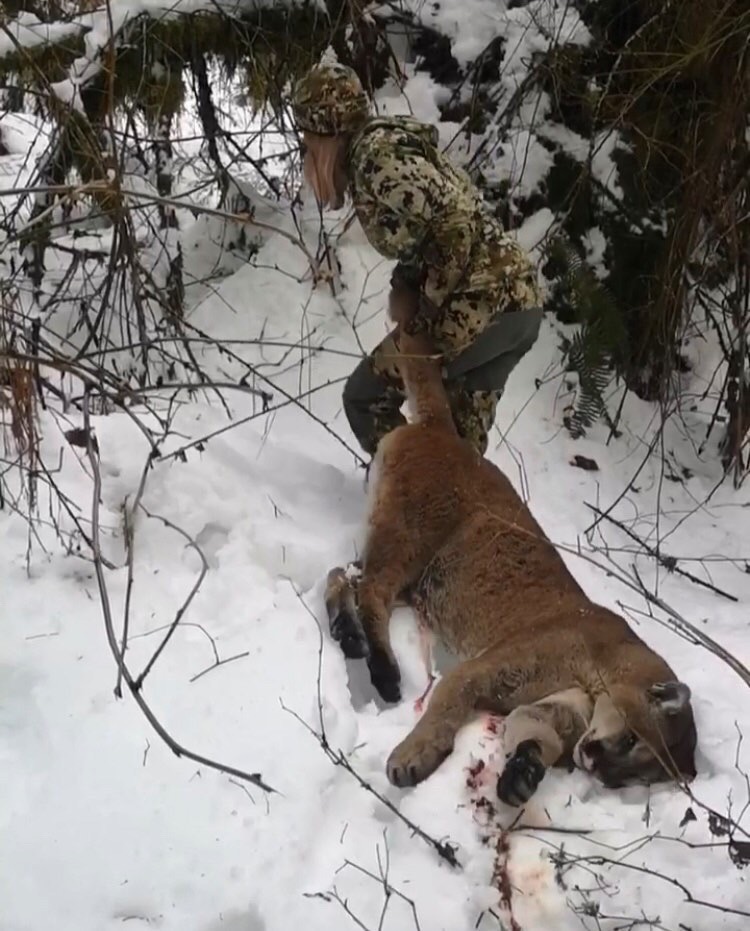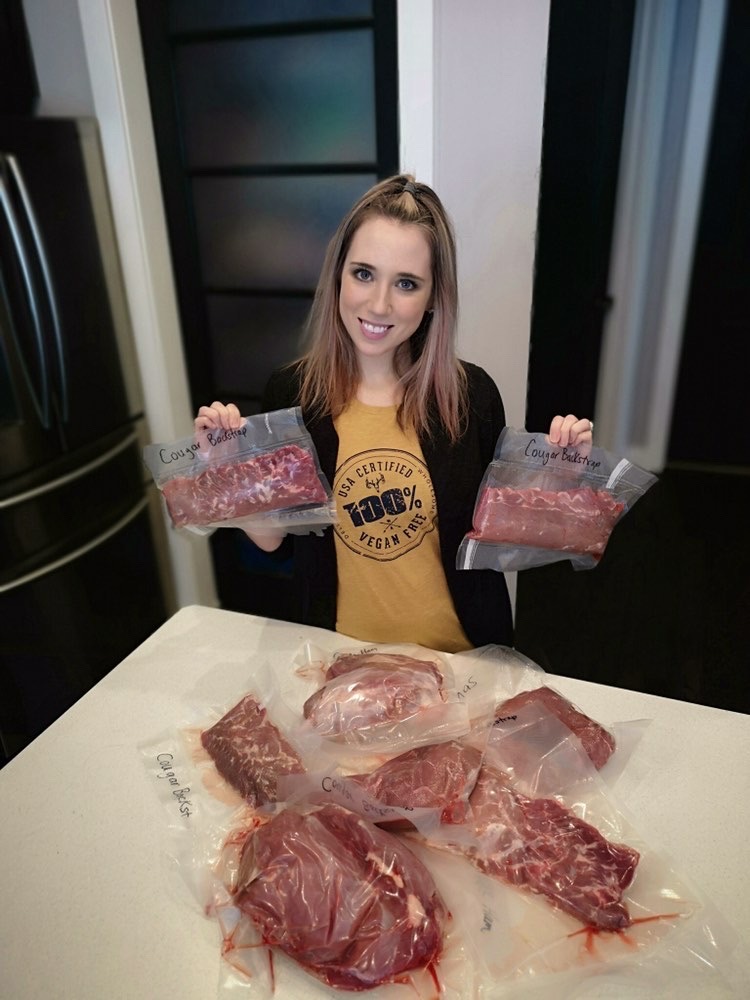
“When are we going to hunt her?” @daniela_s0
“Was hoping the cat got you” @southjerseyclassic
“I really hope you get caught by one of these and they use your filthy blood to feed their babies. The world would be a better place.” @alejandroosorios
- Comments on Sportsman’s Warehouse and Jen Shears’ Instagram posts involving mountain lion harvests.
I prefer to eat food that is free-range and organic, which is one of the many reasons I hunt. The environmental and health benefits of living off the land in a sustainable way are incredible, and I enjoy sharing my stories and harvests in the hopes of encouraging others to do the same. In the past few years of posting hunting photos on Instagram, I have received more than my fair share of hate and attacks from people who don’t agree with (or understand) my lifestyle; but few things bring out anti-hunting comments and vicious personal attacks like photos of harvested predators, specifically wild cats. As demonstrated on a recent Sportsman’s Warehouse post showcasing a harvested cougar, not only do anti-hunters come out in droves, wild feline harvests are a subject where hunters themselves seem to be divided. Hunters of more common animals such as deer or elk will sometimes double-down on wild cat hunts because they view them as a less ethical harvest – either because hounds are sometimes used (and there is an impression that it becomes an easy harvest, which is incorrect), and/or because of the false assumption that the meat isn’t used.
“Not cool… can’t imagine that cat meat even tastes good” @calebmgross
“Your [sic] not eating that cat. People eat them? Always figured it was just for fun.” @salmindeer


Mountain lion meat sometimes has a stigma attached to it, whether it’s because it’s a cat, or because it’s a predator and by default the meat gets a bad reputation. I’ve eaten black bear my entire life so the predator stigma didn’t deter me, but I had heard negative rumblings about the meat and was unsure of what to expect. The mountain lion didn’t have the most pleasant smell during the skinning and butchering process (to be frank, it stank), so I was unsure about how the whole experience was going to turn out.

Here is my simple recipe for mountain lion backstrap:
- Preheat oven to 350 °F
- Mix the following spices in a bowl:
- ¼ cup coarse salt
- ¼ cup paprika
- ¼ cup Montreal steak spice
- 2 tablespoons black pepper
- 1 tablespoon cayenne pepper
- Once the seasonings are mixed well, dry rub them on all sides of the whole, thawed (if applicable) mountain lion backstrap. The seasonings can be modified to your preference.
- Add vegetable oil to a frying pan (enough so that the oil is ¼ inch deep), and heat on medium-high temperature.
- When the pan is HOT, place the meat into the frying pan and sear until the outer layer is browned. NOTE: The hot oil will spit and sputter, but adding some salt to the hot oil will minimize that. Also, take care not to move the meat around before flipping.
- Let it sit undisturbed for a few minutes.
- When one side is seared, turn the meat over. Don’t forget to sear the ends, using tongs to hold it in place to cook if necessary.
-
Once all ends of the mountain lion tenderloin are seared, place it on a greased cookie sheet (or line a cookie sheet with parchment paper) and bake at 350 °F until fully cooked through. Baking time will vary based on cut thickness and oven efficiency.
- NOTE: Take care not to under-cook cougar meat, as like pork, there is a risk of Trichinosis.
- When the meat is fully cooked, cut into slices and serve.
When cooked according to this recipe, the meat goes well with rice and steamed/grilled vegetables. Mountain lion can also be substituted for pork in almost any recipe, keeping in mind that it’s leaner, so slight modifications may be required to ensure the meat doesn’t dry out. I’d love to hear if you like the recipe or if you have any others to share.
Happy cougar cookin’!



